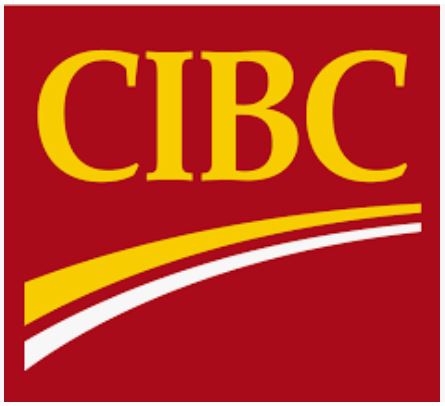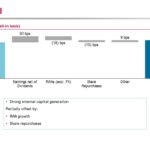Contents
Summary
- CM recently reported FY2018 results and senior management indicated it is confident it can continue to deliver EPS growth within the 5% - 10% medium-term target range.
- CM is focused on expanding in the U.S. and gains from the PrivateBancorp acquisition are exceeding expectations.
- With the highest concentration of the Big 5 in Canadian retail loan exposure and in particular uninsured Canadian mortgages, CM is perhaps more vulnerable than its peer group in the event of an economic downturn in Canada.
- I am confident CM will be able to avoid another ‘landmine’ should the Canadian real estate sector soften significantly come the next economic downturn.
- CM’s attractive valuation and dividend yield will likely appeal to investors seeking a safe and gradually growing stream of dividend income.
All figures are expressed in CDN $ unless otherwise noted.
Introduction
This fourth article in this series covering the Big 5 Schedule A Canadian banks touches upon The Canadian Imperial Bank of Commerce (TSX: CM); CM released its Q4 and FY2018 earnings on November 29.
Article 1 covered The Bank of Nova Scotia (TSX: BNS), article 2 covered The Royal Bank of Canada (TSX: RY), and article 3 covered The Toronto-Dominion Bank (TSX: TD).
In my September 5th article I indicated various headwinds/uncertainties made me reluctant to acquire additional shares in any of the Big 5 other than through the automatic reinvestment of all dividends; CM’s share price has retraced ~10% subsequent to that article.
Please refer to article 2 in which I cover Canada’s FI landscape.
Overview
CM has a heavier focus on Canada than the other 4 members of the Big 5 but with the 2017 acquisition of PrivateBancorp Inc. in the US (since renamed CIBC Bank USA) the plan is to eventually have up to 25% of revenue coming from the US.
I like that CM is focused on expanding in the US. and that management has indicated gains from the PrivateBancorp acquisition are exceeding expectations. CM was notoriously weak with its cross-border service offering for its commercial/corporate clients but improvements are being made now that CM has a US presence.
Wealth management has been a key area of focus by all the Big 5. CM’s management has indicated that it is comfortable with it existing Canadian wealth management franchise.
On the US wealth management front, CM had no assets under administration as recently as 4 years ago. Today, it has over $50B of assets under administration and it has positive fund flows. CM has started adding private bankers across all its US offices and in addition to investing for clients, CM is lending to them.
Although CM has one of the larger domestic branch networks in Canada its products have typically not had leading marketshare although significant improvements have been made in recent years. Despite these improvements I am not of the opinion that CM will displace RY and TD to become the #1 or #2 player on the domestic front.
In previous CM articles I have mentioned that CM was most likely to be the member of the Big 5 which would incur significant writedowns (this occurred when the dot.com bubble burst and the Financial Crisis hit).
CM has significantly improved its operations in the past 5 – 6 years with ROE generally being near 20% (near the top of the Big 5) and operating efficiency approaching levels not evidenced in over a decade.
My primary concern with CM at this stage is that it has the highest concentration of the Big 5 in Canadian retail loan exposure and in particular uninsured Canadian mortgages. I do not envision a housing crisis in Canada like that in the US in 2007 but if Canada encounters an economic downturn I think CM might be harder hit than its peers. Despite this, I am confident CM will be able to effectively manage its domestic mortgage portfolio so it does not incur significant losses.
Q4 and FY2018 Results
CM’s Earnings Release can be found here and its detailed investor presentation can be found here.
CM’s Q4 2018 Investor fact Sheet can be found here.
Source: CM – Q4 and FY2018 Financial Results – November 29 2018
FY2019 Outlook
On the November 29th call with analysts, CM indicated that it is projecting EPS growth between 5 - 10%. There are some significant political headwinds and if these get resolved, CM is confident it can achieve EPS within the midpoint of the 5 - 10% range. If the political headwinds continue, CM is confident EPS will fall within the range but it will be at the low end. If this turns out to be the case then CM has indicated it will need to diligently address costs and to build capital.
Credit Ratings and Common Equity Tier 1 (CET1) Ratio
CM's current ratings and outlook from Moody’s, S&P Global, and DBRS meet my risk tolerance level.
CET1 is a component of Tier 1 capital that consists mostly of common stock held by a bank. This capital measure was introduced in 2014 as a precautionary means to protect the economy from a financial crisis. It is expected that all banks should meet the minimum required CET1 ratio of 4.50% by 2019; CM’s CET1 ratio is well in excess of 4.50%.
Source: CM – Q4 and FY2018 Financial Results – November 29 2018
The Risk Review component of CM’s Q4 Investor Presentation found on pages 13 - 17 provides an overview of the risk aspect of the bank’s various credit related lines of business.
Valuation
CM reported diluted EPS of $11.65 and adjusted diluted EPS of $12.21 versus $11.24 and $11.11 in FY2017. This represents diluted EPS growth of ~3.65% and adjusted diluted EPS growth of ~10%.
On the November 29th conference call with analysts, CM’s President and CEO indicated senior management wants to ensure the bank has a strong CET1 thus giving it flexibility in challenging environments. Maintaining dividend growth is also of key importance.
Management expects the macroeconomic environment in Canada and the US to moderate in that it is of the opinion we are entering a mature end of the credit cycle. It is also concerned about geopolitical tension.
When CM released its FY2017 results on November 30, 2017, it reported diluted EPS of $11.24. On the date of the earnings release CM’s shares closed at $118.14 giving us a diluted PE of ~10.51.
CM only achieved $11.65 diluted EPS in FY2018 which is growth of ~3.65% when compared to $11.24 for FY2017; this is below the low end of the target range.
I do not view CM as having the same pedigree as The Royal Bank of Canada (RY) and The Toronto-Dominion Bank (TD) and am inclined to err on the side of caution and will use 5% growth to calculate projected diluted EPS for FY2019. On this basis I am projecting diluted EPS of $12.23 ($11.65 x 1.05%).
CM is trading at ~$110.83 as I compose this article. Using the $12.23 projected diluted EPS we get a forward diluted PE of ~9.06.
Based on CM’s historical PE level for 2011 – 2017 (10.1, 10.2, 11.0, 12.7, 10.3, 10.2, and 10.9) I view shares as currently attractively valued.
Dividends
CM’s dividend history can be found here.
CM will be distributing its second $1.36 quarterly dividend on January 28, 2019. I envision CM will increase its quarterly dividend by $0.03/share starting with the April 2019 payment. I expect a further $0.03/share increase with the October 2019 payment and on this basis the next 4 dividend payments will likely total $5.56 ($1.36 + ($1.39 x 2) + $1.42).
Stock screeners currently reflect an annual dividend yield just shy of 4.9%. Using my dividend projection and the current $110.83 stock price I get a forward dividend yield just above 5%.
Final Thoughts
CM typically provides investors with the most attractive dividend yield of the Big 5.
I view CM’s current valuation as attractive and I view its dividend as safe and its dividend growth as consistent. On this basis, if dividend income is one of your key investment objectives you may wish to consider acquiring CM shares at current levels.
I am long CM but my exposure is not to the same extent as the banks I have covered in the first 3 articles of this series. The CM shares I currently own are held in undisclosed accounts. I do, however, intend to acquire CM shares for the FFJ Portfolio within the next 72 hours.
I hope you enjoyed this post and I wish you much success on your journey to financial freedom.
Thanks for reading!
Note: I sincerely appreciate the time you took to read this article. Please send any feedback, corrections, or questions to [email protected].
Disclaimer: I have no knowledge of your individual circumstances and am not providing individualized advice or recommendations. I encourage you not to make any investment decision without conducting your own research and due diligence. You should also consult your financial advisor about your specific situation.
Disclosure: I am long BMO, BNS, CM, RY, and TD.
I wrote this article myself and it expresses my own opinions. I am not receiving compensation for it and have no business relationship with any company whose stock is mentioned in this article.




